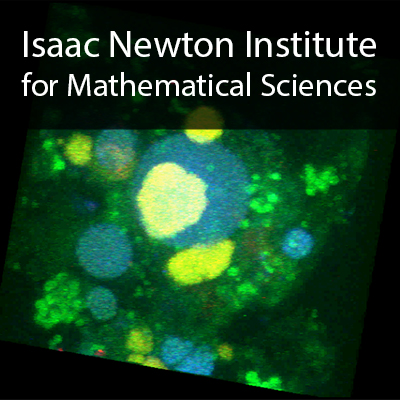Plenary Lecture 14: Ecosystems Biology: from data to control of microbial communities
42 mins 48 secs,
623.52 MB,
MPEG-4 Video
640x360,
29.97 fps,
44100 Hz,
1.94 Mbits/sec
Share this media item:
Embed this media item:
Embed this media item:
About this item

| Description: |
Wilmes, P (Université du Luxembourg)
Friday 28 November 2014, 09:30-10:05 |
|---|
| Created: | 2014-12-02 12:09 |
|---|---|
| Collection: | Understanding Microbial Communities; Function, Structure and Dynamics |
| Publisher: | Isaac Newton Institute |
| Copyright: | Wilmes, P |
| Language: | eng (English) |
| Distribution: |
World
|
| Explicit content: | No |
| Aspect Ratio: | 16:9 |
| Screencast: | No |
| Bumper: | UCS Default |
| Trailer: | UCS Default |
| Abstract: | Co-authors: Emilie Muller (University of Luxembourg), Anna Heintz-Buschart (University of Luxembourg), Shaman Narayanasamy (University of Luxembourg), Cédric Laczny (University of Luxembourg)
Mixed microbial communities are complex and dynamic systems. Integrated omics (combined metagenomics, metatranscriptomics, metaproteomics and metabolomics) are currently gaining momentum for detailed descriptions of community structure, function and dynamics in situ as well as offering the potential to discover novel functionalities within the framework of Eco-Systems Biology. We have developed an integrative workflow comprising wet- and dry-lab methodologies to enable systematic measurements of microbial communities over space and time, and the integration and analysis of the resulting “multi-meta-omic” data. Two distinct approaches have been developed allowing the deconvolution of integrated omic data either at the population- or community-level. By resolving multi-omic data at the population-level, we have uncovered patterns which suggest that in our model microbial community (lipid accumulating microbial consortia from a biological wastewater treatment tank) t he dominance of a microbial generalist is linked to finely tuned resource usage. Analysis of reconstructed metabolic networks has resulted in the identification of possible “keystone genes”, analogous to keystone species in species interaction networks. Integrated omics will likely become the future standard for the large-scale characterization of microbial consortia within an Eco-Systems Biology framework. In particular, by integrating information from genome to metabolome, integrated omics allows deconvoluton of structure-function relationships by identifying key members and functionalities. For example, identified keystone species and/or genes likely represent driver nodes which may be exploited in view of future control strategies. However, to test emerging hypotheses and formulate predictive models, which support such endeavours, an iterative discovery-driven planning approach is required. This should ultimately allow the manipulation of microbial communities and steer them towards desired outcomes. |
|---|---|
Available Formats
| Format | Quality | Bitrate | Size | |||
|---|---|---|---|---|---|---|
| MPEG-4 Video * | 640x360 | 1.94 Mbits/sec | 623.52 MB | View | Download | |
| WebM | 640x360 | 620.26 kbits/sec | 194.51 MB | View | Download | |
| iPod Video | 480x270 | 522.26 kbits/sec | 163.72 MB | View | Download | |
| MP3 | 44100 Hz | 249.82 kbits/sec | 78.37 MB | Listen | Download | |
| Auto | (Allows browser to choose a format it supports) | |||||

